There’s always something really satisfying about getting a fresh build-it-yourself kit from Tamiya. I know for me it’s the level of detail that Tamiya goes to when recreating their true-to-life scale replicas, even in RC form. It’s not a surprise that every kit looks the part, considering Tamiya’s many years as a scale model manufacturer, and truly that’s what the RC Volkswagen Karmann Ghia is, a remote-controlled scale model. Let’s check out my build transforming this kit from a box of parts into a beautiful SoCal Cruiser.
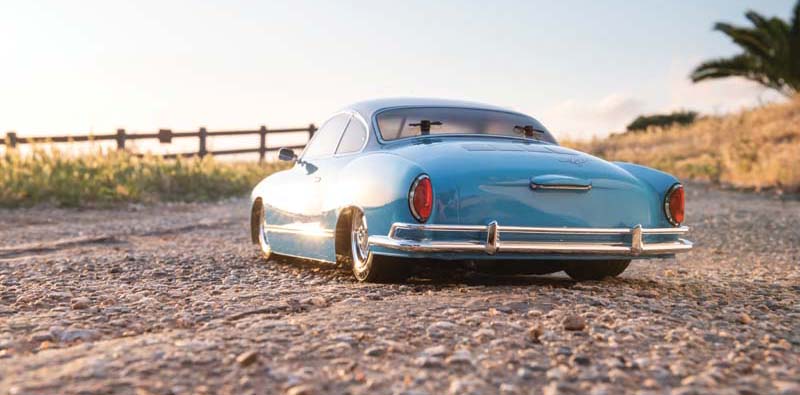
Tamiya includes detailed decals for recreating the Karmann Ghia’s headlights and taillights, including chrome trim rings.
[wonderplugin_tabs id=”20″]
The Build
ON THE BENCH
Like most Tamiya kits, the RC Volkswagen Karmann Ghia requires assembly, which is always half the fun. Tamiya’s instructions are simple and easy to follow so if you are new to the kit-building experience, be sure to take your time and enjoy the process. The instruction packet is full of well-illustrated examples and directions, along with handy sidebars on each page that give the builder a scale illustration of parts, including 1-to-1 pictures of the screws and hardware.
One note I’d make for those who haven’t built a Tamiya RC model before, sometimes the screws and hardware may be spread across the different parts bags, so if you find yourself coming up short on a couple of “BA6” screws, don’t worry they’re probably in another bag that you haven’t opened yet.
This was my first M06 chassis build, so it was nice to see just how Tamiya has been able to design the chassis parts to get 3 different wheelbases and chassis lengths. A very efficient Tamiya design as always.
All the parts went together nicely, and I appreciate the small details they included in the M06 chassis, like the “tunnel” for running the servo wire underneath the battery. I do wish they would have been able to include a hard-mount area for the on-off switch like their full size 1/10 scale chassis cousins, but some supplied double-sided tape did the trick nicely.
The polycarbonate body really sings with its true-to-life details and was a joy to paint. I opted for a classic 2-tone look since it evokes a period-correct Southern California car culture vibe. I also decided to slam the body down a few notches past the recommended height to give it that lowered air-cooled VW look. Once painted I took my time trimming decals, making sure to just kiss the edge of each one with my blade to minimize the amount of clear decal material left on the edges. Decals are a point in every build where a little bit of extra time can pay off.
As for electronics I installed a Futaba S3470SV steering servo and R324SBS receiver to go along with my Futaba 3PV radio. I decided to swap out the Tamiya connector on the TBLE-02S speed controller in favor of a Deans plug, simply because my battery is wired for Deans, and I’m a fan of compatible plugs rather than running adapters.
To keep things a bit more to the scale look, I opted to hide the antenna wire, using the trick of coiling the wire a bit and then bending a shortened piece of antenna tube with some heat to keep it tucked under the body. No unsightly antenna holes for this build.
All in all, the car looks the part and really came together nicely with the added molded details like the chrome finished bumpers and wing mirror, as well as the chrome window trim and headlight trim decals. Tamiya did a great job with this one.

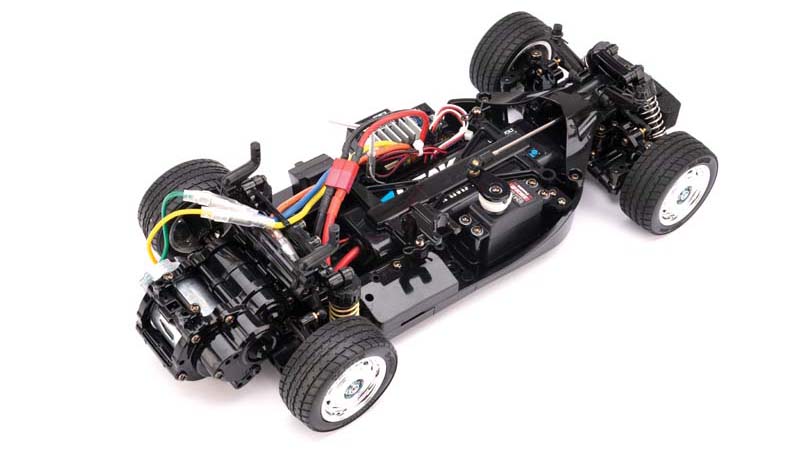
The M06 is a rear wheel drive, rear motor chassis layout, putting a good deal of weight behind the rear axles. This type of layout makes for some fun driving.
CRUISING THE BEACH
Seeing as this is a fully functional RC model, I took the car out to the pavement along the coast. Nothing like some fresh air, an RC car, and the sun setting over the waves late in the day to give you some real peace of mind.
While puttering around with the Ghia, I received a lot of compliments from passersby, some simply admiring the paintjob, others enthralled by the detail of the kit. One individual had never heard of a VW Karmann Ghia before, so it was a fun experience for me as a car nerd to talk to them a little bit about it. It always inspires me how a nice looking model car can open up to so many interactions with people, an aspect of RC that I find very enjoyable.
Straight out of the box, the Ghia is fun to drive. It may not be a high-performance rubber burner, but the RWD, rear-motor layout lends an entertaining slip and slide feeling when you get punchy with the throttle and brake input, especially while turning at speed. I had a good time zipping the car around on the road, occasionally getting the rear end the break loose for some slides.
The extra bit of wheelbase length of the M-06L layout helps to keep the car tidy most of the time, as do the stickier rear tires. I can foresee the car being a bit of a handful with the installation of higher speed low turn motor, but the included 540 can does a good job for a satisfying amount of fun. Throttle output is aided in part by the gearbox only having 2 gears, so the power is put down efficiently.
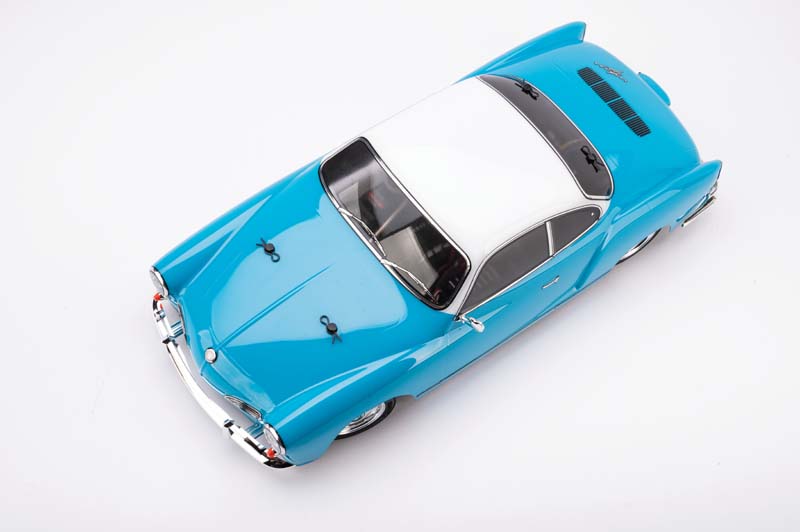
A sleek 2-tone paint scheme was chosen to give the SoCal lowered VW vibe.
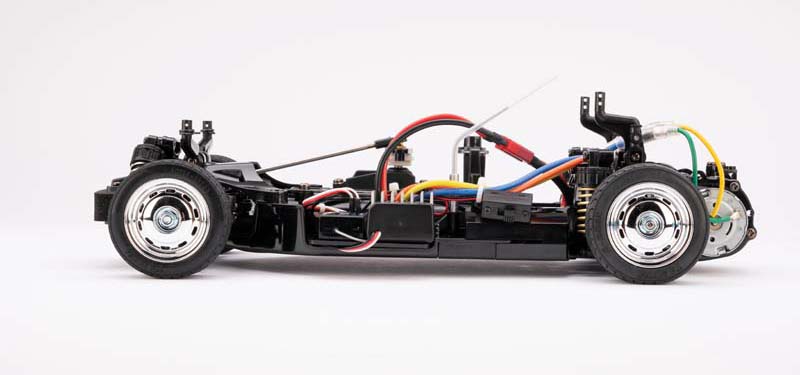
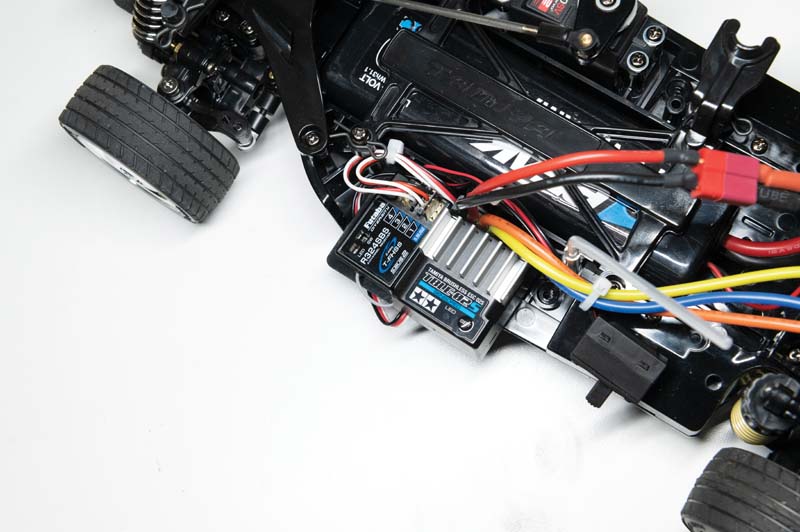
The ESC and receiver mount onto an integrated electronics plate that neatly tucks to the side.

An old trick to hide the antenna under the body is to coil up some of the antenna wire slack and use a shortened, bent piece of antenna tubing to keep the important receiving end above the rest of the chassis electronics.
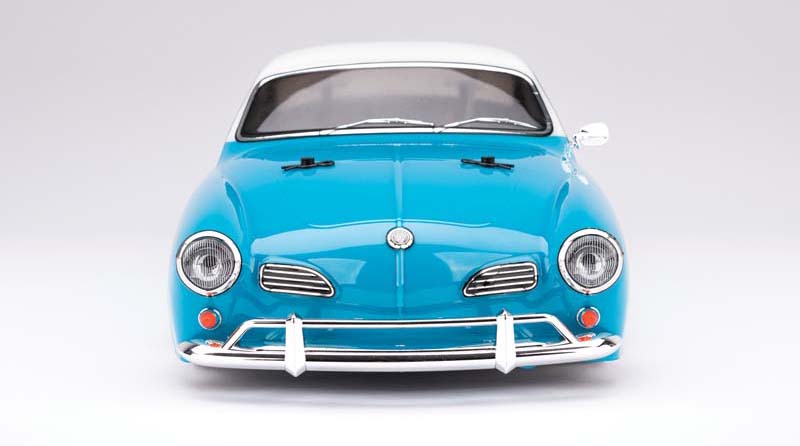
Final Word
I’d be lying if I said that I’ll be driving this model often, to me it’s just too pretty to mess up with scratches and gouges, so it will live a lot of its days on my model shelf for me to admire. I’d also be lying though if I said I was never going to take it out ever again. It’s an RC car after all, and RC cars are meant to be driven.
The classic lines of the Karmann Ghia, paired with Tamiya’s penchant for making accurately detailed models puts the RC VW Karmann Ghia kit in the books as a great collector’s piece as well as a fun to drive kit. I’d highly recommend this kit to anyone who wants to add a SoCal classic car culture icon to their RC garage.
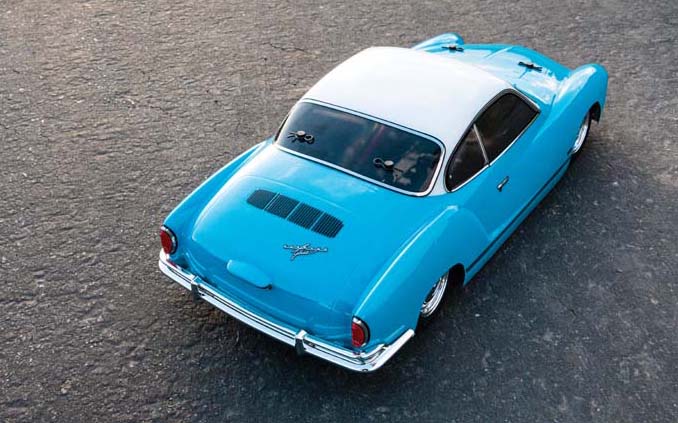
The polycarbonate body is adorned with a lot of sharp looking decals, including some believable rear deck vents.
Text and Images by Lauren Short
The post SoCal Cruising: Building Tamiya’s Beautifully Detailed VW Karmann Ghia appeared first on RC Car Action.
